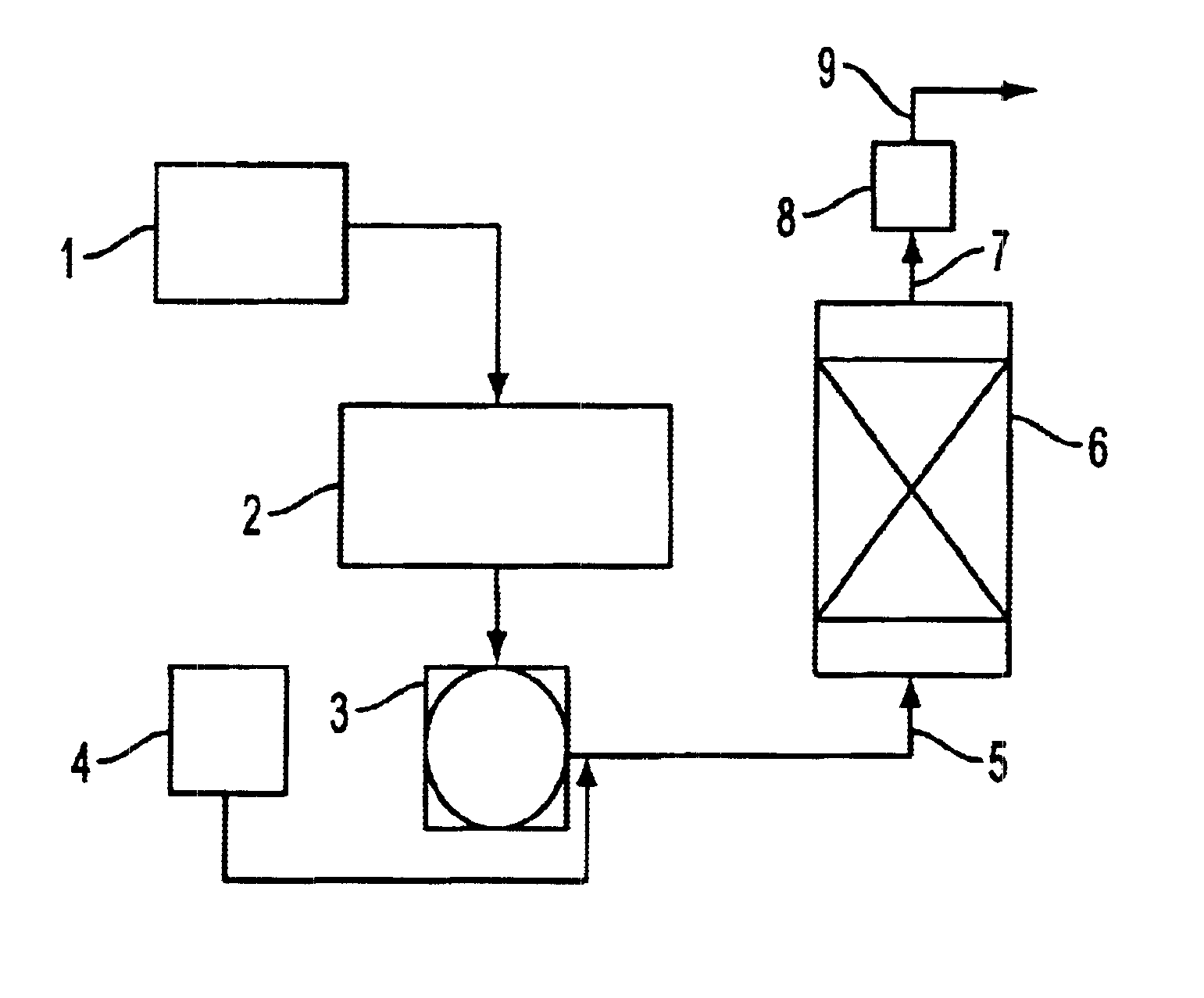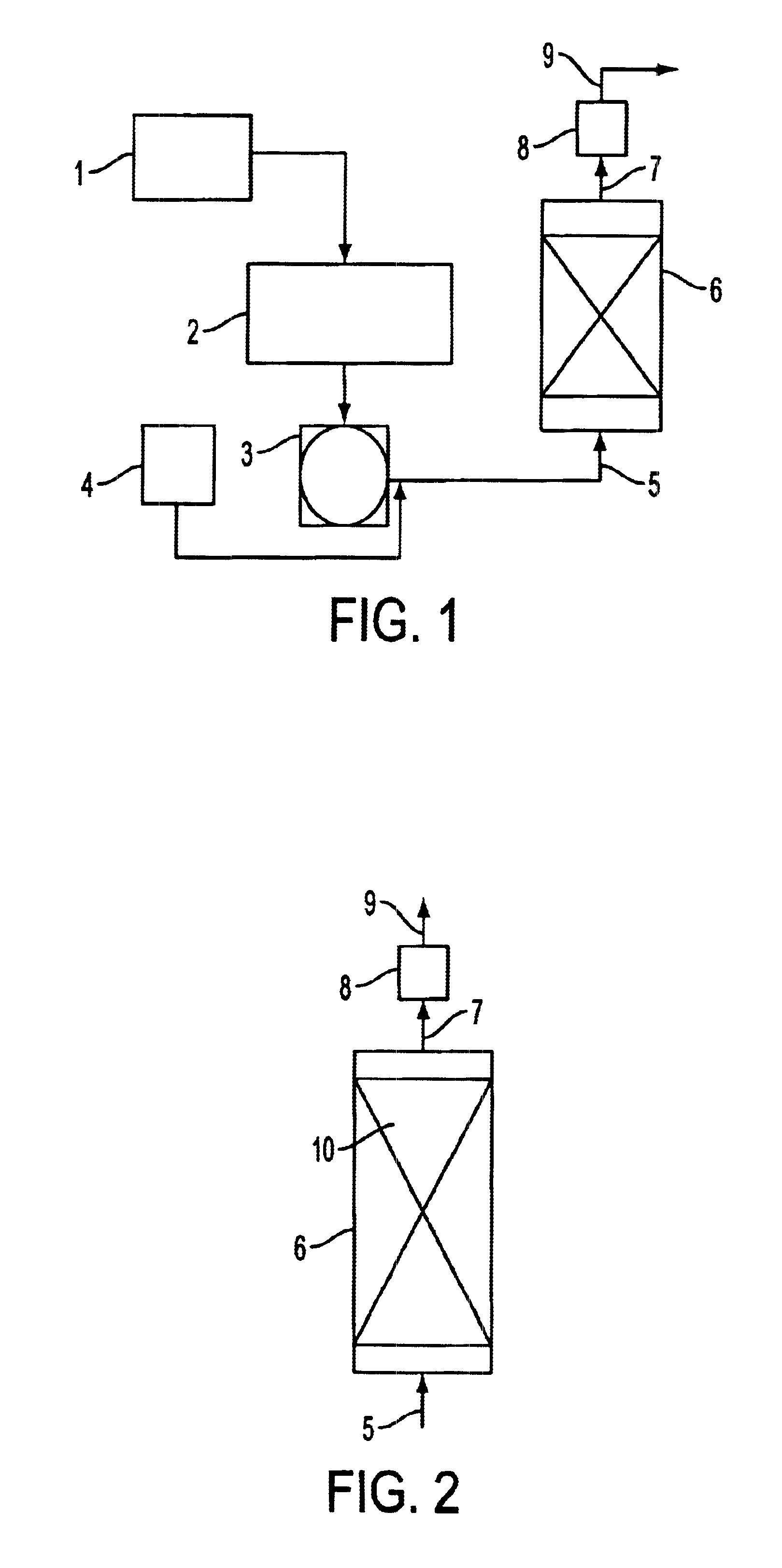Harm-removing agent and method for rendering halogen-containing gas harmless and uses thereof
a technology of harmless halogen and harmless gas, which is applied in the direction of physical/chemical process catalysts, separation processes, cleaning using liquids, etc., can solve the problems of complicated equipment for wet process, gas outlet lines of treating apparatus may be blocked, and wet process is not widely applied, so as to achieve the effect of removal
- Summary
- Abstract
- Description
- Claims
- Application Information
AI Technical Summary
Benefits of technology
Problems solved by technology
Method used
Image
Examples
examples 1 to 5
In Examples 1 to 5, the tested harm-removing agents were prepared, as shown in the test conditions of Table 3, by using a three-component system of ferric oxide (.gamma.-FeOOH or .gamma.-Fe.sub.2 O.sub.3), alkaline earth metal compound and activated carbon or by adding calcium sulfate to the three component system. The results obtained are shown in the test results of Table 3 and from this, it is seen that sufficiently high ability was obtained in both the ability of removing SiF.sub.4 and the ability of removing HCl.
example 6
Using an actual apparatus having the same principle as shown in FIG. 1, the tests of the present invention were performed. The harm-removing agents were filled as follows. As shown in FIG. 3, activated carbon (organic alkali-attached activated carbon) and the harm-removing agent of the present invention were filled to form a two-layer structure at a ratio of 7:3. In the apparatus for comparison, an organic alkali-attached activated carbon was filled alone (in 100%). These were each filled into a harm-removing cylinder having an effective volume of 130 L.
The tests were performed by introducing an exhaust gas of dry etching process in which the poly-silicon was etched by an etching gas containing 50 SCCM HBr and 50 SCCM Cl.sub.2 under the same etching conditions into each of those harm-removing cylinders by using 20 SLM nitrogen carrier gas. The results obtained were compared by the total hours counted in etching until a hue detector provided integrally with the harm-removing cylinder...
example 7
Using an actual apparatus having the same principle as shown in FIG. 1, the tests of the present invention were performed. The harm-removing agents were filled as follows. As shown in FIG. 3, activated carbon (coconut husk activated carbon) and the harm-removing agent of the present invention were filled to form a two-layer structure at a ratio of 7:3. In the apparatus for comparison, an organic alkali-attached activated carbon was filled alone (in 100%). These were each filled into a harm-removing cylinder having an effective volume of 130 L.
The tests were performed by introducing an exhaust gas of dry etching process in which the aluminum was etched by an etching gas containing 50 SCCM BCl.sub.3, 100 SCCM Cl.sub.2 and 100 SCCM Ar under the same etching conditions into each of those harm-removing cylinders by using 20 SLM nitrogen carrier gas. The results obtained were compared by the total hours counted in etching until a hue detector provided integrally with the harm-removing cyl...
PUM
| Property | Measurement | Unit |
|---|---|---|
| specific surface area | aaaaa | aaaaa |
| particle size | aaaaa | aaaaa |
| particle size | aaaaa | aaaaa |
Abstract
Description
Claims
Application Information
 Login to View More
Login to View More - R&D
- Intellectual Property
- Life Sciences
- Materials
- Tech Scout
- Unparalleled Data Quality
- Higher Quality Content
- 60% Fewer Hallucinations
Browse by: Latest US Patents, China's latest patents, Technical Efficacy Thesaurus, Application Domain, Technology Topic, Popular Technical Reports.
© 2025 PatSnap. All rights reserved.Legal|Privacy policy|Modern Slavery Act Transparency Statement|Sitemap|About US| Contact US: help@patsnap.com



